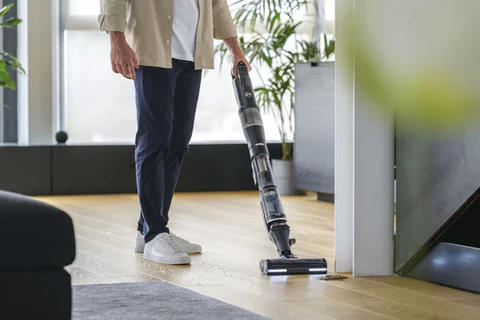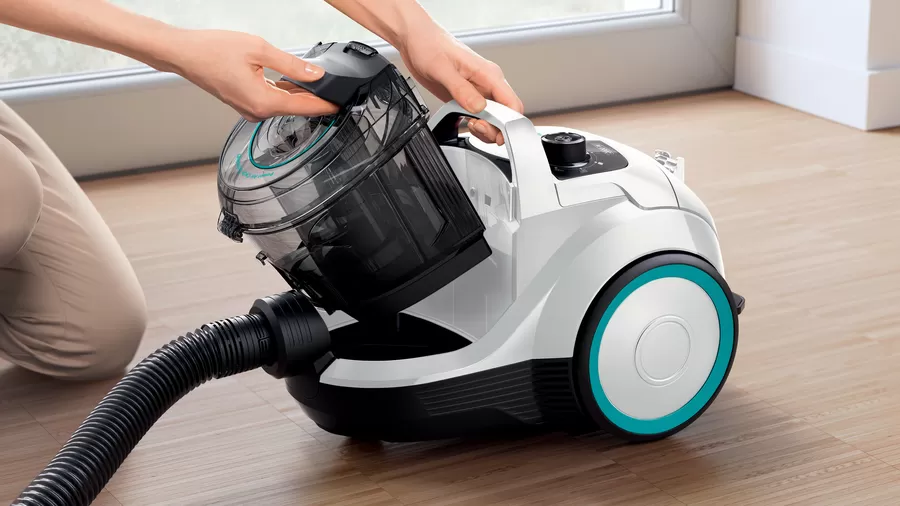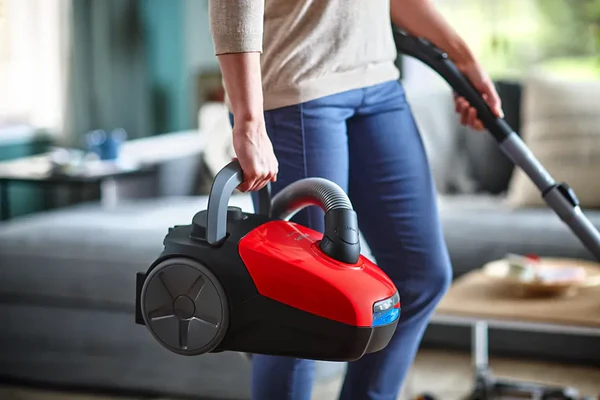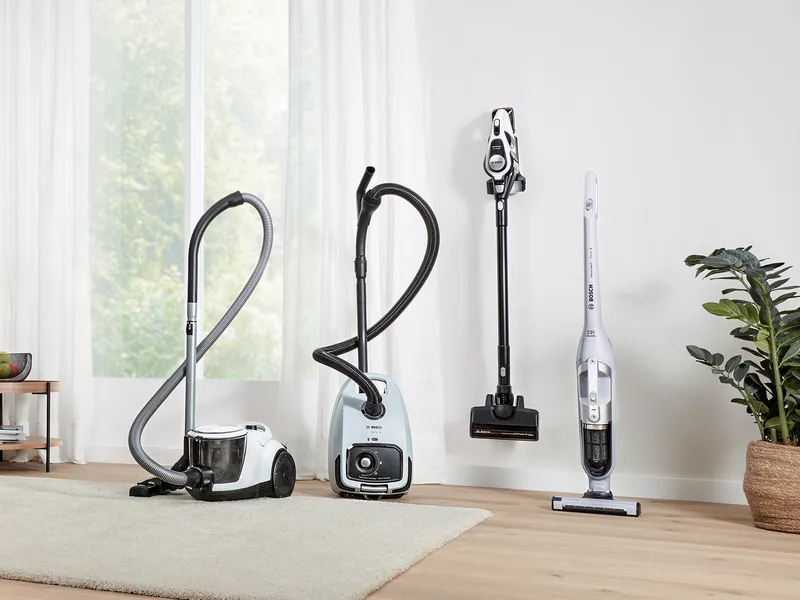Vacuum cleaners are a household essential for maintaining clean floors, carpets, furniture, and even hard-to-reach corners. Whether you have a bustling family home, a cozy apartment, or a pet-friendly space with fur constantly underfoot, the right vacuum cleaner can save you time and effort, keeping your living areas tidy and allergen-free. Yet, with countless models on the market—upright, canister, stick, robot, handheld, and more—figuring out which vacuum suits your needs can be daunting. In this article, we’ll walk through the key considerations, from vacuum types and performance features to maintenance, budget, and brand reputation. By the end, you’ll be ready to choose a vacuum cleaner that aligns perfectly with your home, lifestyle, and cleaning preferences.
1. Identifying Your Cleaning Environment and Needs
Before you dive into specific models, think about where and how you’ll be using the vacuum:
- Flooring Types: Is your home mostly carpeted, hardwood, or a mix of both? Some vacuums excel on plush carpet but underperform on hard floors, and vice versa.
- Size of Your Space: Large homes may require a powerful, larger-capacity vacuum. Smaller apartments or dorms might benefit from compact, lightweight options.
- Stairs: If you have multiple levels, carrying a heavy upright up and down stairs can be cumbersome—perhaps a canister or lightweight stick vacuum is more practical.
- Pets and Allergies: If you have furry friends, look for a vacuum designed to handle pet hair and dander, often featuring specialized brushes or filters. Similarly, allergy sufferers might prioritize HEPA filtration to capture dust mites and allergens.
- Frequency and Ease: If you’re short on time or hate lugging a vacuum around daily, a robot vacuum can handle regular upkeep. Conversely, if you prefer deep-cleaning sessions, you might need a heavier-duty machine.
Clearly understanding your home environment and cleaning habits ensures that you focus on the type and features of vacuum most relevant to you.

2. Types of Vacuum Cleaners
a) Upright Vacuums
Upright vacuums are a classic design, with the motor, dust container, and brush roll integrated into a single unit that you push in front of you.
- Pros:
- Ideal for deep-cleaning carpets and rugs.
- Often feature large dust capacities, meaning less frequent emptying.
- Broad cleaning paths for efficient coverage.
- Cons:
- Heavier, can be cumbersome to maneuver around tight corners or under furniture.
- Not always as versatile for stairs or above-floor cleaning unless they have a removable hose/wand.
- Storing them may require a taller closet or specific area.
Uprights typically suit larger spaces with carpeted floors, especially if you don’t mind a bigger, heavier machine.
b) Canister Vacuums
Canister vacuums separate the motor and dirt receptacle into a wheeled “canister,” connected to a wand and cleaning head by a flexible hose.
- Pros:
- Excellent maneuverability—easy to clean under furniture, around corners, or overhead.
- Good for mixed surfaces (carpet, hardwood, tile).
- Lighter wand handling, reducing arm strain.
- Cons:
- More pieces to store; the canister might get in the way in tight spaces.
- You must pull the canister behind you, which can snag on corners.
- Sometimes more expensive than upright models of similar power.
Canisters are popular among users who want a versatile vacuum for multiple floor types and need easy above-floor cleaning, for instance, drapes, upholstery, or staircases.
c) Stick Vacuums
Stick vacuums are ultra-light upright models, often cordless and battery-powered. They’ve become increasingly popular due to improved battery technology.
- Pros:
- Lightweight and easy to maneuver, perfect for quick cleanups.
- Cordless versions let you move freely without outlet constraints.
- Slim profiles simplify storage, often in a closet or corner.
- Cons:
- Smaller dust bins require more frequent emptying.
- Battery life may limit cleaning time.
- Typically less suction power than full-size uprights or canisters (though higher-end models are improving in this regard).
Stick vacuums work well for smaller homes, apartments, or as a secondary vacuum for quick pick-ups. They’re also great if you prefer minimal bulk and quick, convenient operation.
d) Handheld Vacuums
Handheld vacuums are compact, cordless units designed for spot cleaning—think crumbs on the couch, car interiors, or small messes.
- Pros:
- Highly portable, easy to grab for quick tasks.
- Some models have attachments for tight corners or upholstery.
- Perfect for tackling small spills or vacuuming inside vehicles.
- Cons:
- Limited run time and smaller dust cups.
- Not suitable for whole-house cleaning.
- Suction power is modest compared to full-size vacuums.
Handhelds are best as an add-on vacuum for small spills or quick spot cleans, rather than a primary machine.
e) Robot Vacuums
Robot vacuums autonomously roam your floors, picking up dust and debris, then returning to their charging docks.
- Pros:
- Great convenience—schedule cleaning while you’re away.
- Some advanced models map your home for efficient coverage.
- Ideal for regular maintenance, especially on hard floors or low-pile carpets.
- Cons:
- Less powerful suction, and may struggle with thick carpets or heavy debris.
- Can get stuck on cables or uneven thresholds.
- Smaller dust bins need frequent emptying; regular filter maintenance is critical.
A robot vacuum is perfect if you want minimal daily effort and have relatively clutter-free floors. For deep cleaning or thicker carpets, you may still need a more traditional vacuum as backup.

3. Bagged vs. Bagless
a) Bagged Vacuum Cleaners
- Pros:
- Dust and debris are contained in disposable bags, reducing contact with allergens.
- Typically better for allergy sufferers, as sealed bags prevent dust from escaping during disposal.
- Large capacity—fewer changes needed if the bag is big.
- Cons:
- Ongoing cost of replacement bags.
- Less eco-friendly due to disposable bag waste.
- If you run out of bags unexpectedly, you can’t vacuum until you get more.
b) Bagless Vacuum Cleaners
- Pros:
- No bag replacement costs; you can empty the canister as needed.
- Clear canisters let you see what’s being collected (and spot any accidentally sucked-up items).
- Generally more eco-friendly as you’re not throwing away bags.
- Cons:
- Emptying the dust cup can release some dust back into the air—less ideal for severe allergy sufferers unless done carefully.
- Filters may need more frequent cleaning.
- Some find it messy or inconvenient to empty the canister into the trash without creating a dust cloud.
Your choice might hinge on convenience, personal sensitivity to dust, and budget considerations for ongoing bag purchases.
4. Filtration and Allergen Control
a) HEPA Filters
High-Efficiency Particulate Air (HEPA) filters capture at least 99.97% of particles as small as 0.3 microns. If you or someone in your household has asthma or severe allergies, a HEPA filter is a must. It traps dust mites, pet dander, pollen, and even some bacteria or mold spores, preventing them from recirculating into the air.
b) Washable vs. Disposable Filters
- Washable/Reusable: Economic and eco-friendly, but must be rinsed and dried thoroughly as per the manufacturer’s instructions.
- Disposable: Easier to replace but adds ongoing costs. Usually replaced every 6–12 months depending on usage and environment.
c) Sealed Systems
Some vacuum cleaners are designed with a “sealed system,” ensuring unfiltered air doesn’t leak out. This is especially beneficial for allergy sufferers. A vacuum might have a HEPA filter, but if it’s not sealed properly, some dust-laden air can escape around gaskets or connections.
5. Suction Power and Performance
a) Wattage and Amps
While many shoppers fixate on wattage or amps, these specs don’t necessarily translate directly to better suction. They reflect the motor’s power consumption rather than suction efficiency. A well-designed vacuum can have lower wattage but still deliver excellent suction via optimized airflow and brush design.
b) Air Watts and CFM
Air watts and CFM (Cubic Feet per Minute) are more accurate measures of a vacuum’s suction capability and airflow. However, not all manufacturers list these metrics prominently. Reading independent tests or user reviews can help determine a model’s real-world performance.
c) Brushroll and Floor Tools
A robust brushroll (rotating brush) significantly enhances pickup, especially on carpets. Some vacuums feature a switch or automatic sensor for transitioning between carpets and hard floors, adjusting brush rotation and/or suction accordingly. For delicate floors, a soft-bristle brush or a “bare floor” setting is crucial to prevent scratches.

6. Attachments and Accessories
A vacuum’s versatility often hinges on the included attachments:
- Crevice Tool: Narrow nozzle for tight spaces, edges, and corners.
- Dusting Brush: Soft bristles for delicate surfaces like blinds, lampshades, or shelves.
- Upholstery Tool: Removes lint, pet hair, and dust from furniture or drapes.
- Motorized Pet Tool: A smaller turbo brush for removing embedded hair from furniture, stairs, or car interiors—useful in pet-friendly homes.
Check if the vacuum has on-board storage for these tools, which can help you switch attachments quickly while cleaning.
7. Maneuverability and Weight
a) Handling
Consider how well the vacuum pivots or steers. Many modern upright models incorporate swivel steering, letting you turn easily around furniture legs. Canisters typically have a swiveling hose and handle, though you’ll be dragging the canister behind you.
b) Weight and Portability
Hauling a heavy vacuum up and down stairs can become a chore. If you have physical constraints or a multi-level home, look for lighter models or those with well-placed carrying handles. Stick vacuums are often the lightest, while some uprights can weigh over 20 pounds. Evaluate your comfort threshold.
c) Cord Length or Cordless Runtime
- Corded Vacuums: Check the cord length—longer cords reduce the need to switch outlets mid-clean. Retractable cords are a convenience perk.
- Cordless Vacuums: Consider battery life, which can range from 15 to 60+ minutes on a full charge. Also look at recharge times. Additional or replaceable batteries can extend cleaning sessions.
8. Noise Level
Vacuuming can be noisy, which matters if you have neighbors, small children, or pets sensitive to sound. Some manufacturers list decibel ratings—60–65 dB is considered relatively quiet, while typical vacuums might be in the 70–80 dB range. If noise is a concern, read reviews or test the vacuum in-store to gauge if it’s tolerable.
9. Maintenance and Operating Costs
a) Bags, Filters, and Belts
Bagged vacuums require periodic bag purchases. Bagless vacuums usually require filter cleaning or replacement. Some vacuums also use a belt to drive the brushroll, which can stretch or break over time. Understanding these consumables’ costs and how often they need replacement helps you budget.
b) Battery Replacement for Cordless
If you choose a cordless model, the battery’s lifespan might be 2–3 years (or more, depending on usage). Replacing it can be a significant expense, especially for higher-end models. Confirm availability and cost of replacement batteries, as well as the brand’s support.
c) Easy-Access Dust Cup or Bag Change
Review how easy it is to empty a bagless bin or swap out a bag. If it’s a messy or tricky process, you may dread regular maintenance, which leads to reduced performance and potential odor buildup.

10. Brand Reputation and Warranty
a) Trusted Brands
Brands like Dyson, Miele, Hoover, Shark, Bissell, and Roomba (for robots) often have established reputations for specific strengths (e.g., Dyson’s cyclonic suction, Miele’s quality canisters, or Shark’s innovative upright designs). Explore brand-specific reviews to see if they align with your cleaning goals.
b) Warranty and Customer Support
Check warranty length—1 to 5 years is standard, though premium models may offer longer coverage. Some also have distinct warranties for motors versus parts. Good customer support is vital if your vacuum encounters mechanical issues.
11. Budgeting and Price Ranges
Vacuums range from budget-friendly $50–$100 models up to $500+ for high-end uprights or canisters, and even $1000+ for premium European brands or advanced robot vacuums. In general, you’ll get:
- Under $100: Basic suction, smaller capacity, fewer features, suitable for light use.
- $100–$300: Mid-range sweet spot—better build quality, improved suction, some advanced features.
- $300–$600: Higher-tier models with stronger performance, specialized technology, longer warranties.
- $600+: Premium brand engineering, robust durability, top-tier suction, sophisticated filtration, or advanced robot AI.
Factor in potential ongoing costs for bags, filters, or battery replacements when deciding your ideal price bracket.
12. Energy Efficiency
While vacuuming doesn’t typically consume massive electricity, eco-conscious shoppers can look for Energy Star ratings or compare motor wattage if usage is frequent. A well-designed vacuum with optimized airflow may operate efficiently without needing the highest wattage.
13. Trying Before You Buy
If possible, visit a store where you can handle display units. Test the vacuum’s weight, steering, and noise. Some stores let you run the vacuum briefly on a test patch of carpet or floor. This hands-on feel is valuable—advertised features might look great, but if you find the vacuum unwieldy or the handle angle uncomfortable, it’s not the best pick for you.

14. Reading Reviews and Ratings
Online user reviews can reveal real-world insights—like how a vacuum handles pet hair, how often the filters clog, or if the wheels squeak. Consider checking professional consumer sites or independent testing labs that measure suction and performance across various surfaces. Combine this data with your personal preferences to finalize your decision.
15. Conclusion
Choosing the perfect vacuum cleaner is about balancing your home’s unique challenges, personal preferences, and budget with the technical features that matter most—be it raw suction power, specialized pet hair tools, HEPA filtration, or cordless convenience. Start by clarifying your floor types, home size, and any pet or allergy requirements. Then, narrow down whether you prefer an upright, canister, stick, handheld, or robot design. From there, weigh factors like bagged vs. bagless, filtration quality, attachments, noise levels, and potential maintenance costs.
A great vacuum can significantly simplify chores, keep your living spaces hygienic, and reduce allergens that cause sneezing or itching. But a poorly matched model, be it too bulky, too weak, or too noisy, can become an annoyance relegated to the closet corner. By applying the guidance in this article—understanding your usage needs, exploring key features, and carefully evaluating each option—you can confidently select a vacuum that will serve as a reliable cleaning companion for years to come. With the right vacuum in hand, you’ll breeze through chores, leaving your floors and furniture spotless and your indoor air clean and fresh.
